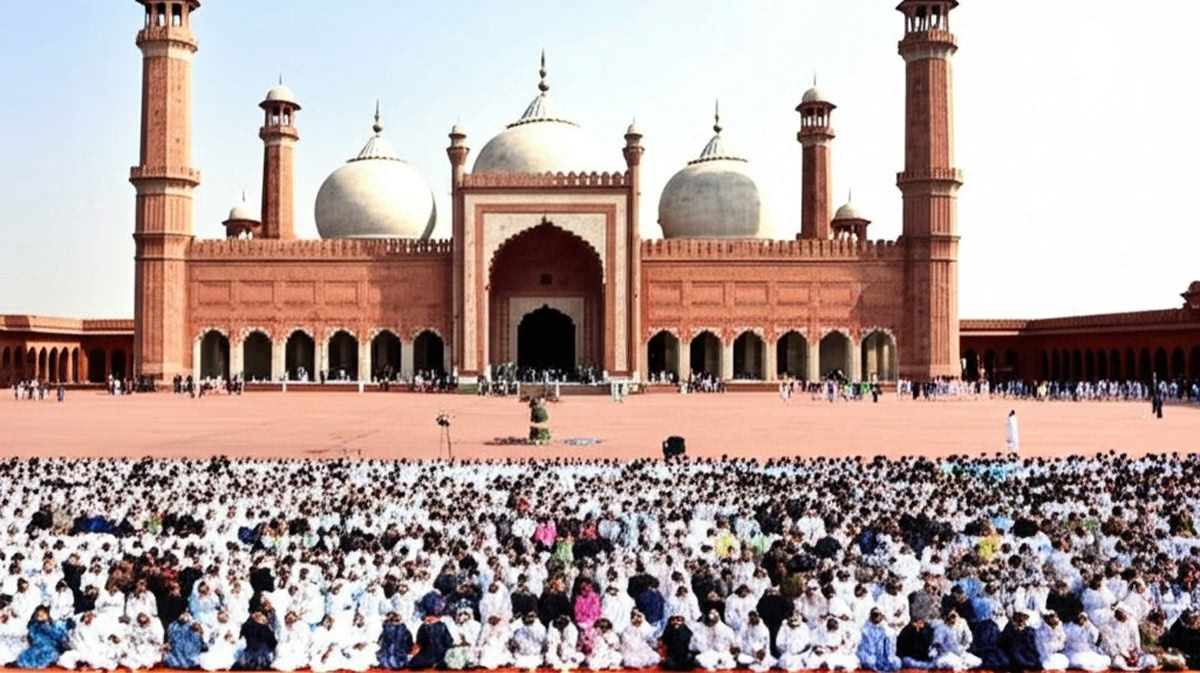Eid ul Fitr 2025 dates announced
Eid ul-Fitr 2025 dates have been announced in various countries
Eid ul-Fitr 2025 dates have been announced in various countries based on the sighting of the Shawwal moon. Here’s a summary of the dates for different regions:
- Saudi Arabia: Eid ul-Fitr will be celebrated on Sunday, March 30, 20259.
- UAE: Eid ul-Fitr is officially on Sunday, March 30, 20256.
- Pakistan: The Ruet-e-Hilal Committee is expected to confirm the sighting, but Eid is likely on Monday, March 31, 20251.
- India, Malaysia, Indonesia, Bangladesh, Australia, and Brunei: These countries will celebrate Eid ul-Fitr on Monday, March 31, 2025, as the Shawwal moon was not sighted on Saturday25.
- US, UK, and other Western countries: The dates will depend on local moon sightings or announcements from Saudi Arabia3.
How do different countries celebrate Eid-ul-Fitr
Eid-ul-Fitr is celebrated with unique traditions and practices across the world, reflecting the cultural diversity of Muslim communities. Here are some examples of how different countries celebrate this joyous occasion:
Middle East
- Saudi Arabia: Celebrations begin with the sighting of the moon. Families gather for feasts, exchange gifts (especially for children), and participate in traditional activities like camel races and falconry. Charity is also emphasized, with donations to the less fortunate14.
- UAE: Homes are decorated with lights, and public festivities include fireworks and cultural shows. Families share meals, exchange gifts, and give to charity to ensure inclusivity in celebrations14.
South Asia
- Pakistan: Preparations begin weeks in advance. On Chand Raat (the night before Eid), women apply henna and shop for bangles. The day includes prayers, visiting relatives, and enjoying traditional dishes like biryani and sheer khurma24.
- India: Known as Meethi Eid, it is marked by morning prayers, exchanging gifts, and preparing sweet dishes like seviyan (vermicelli pudding)3.
Southeast Asia
- Indonesia: Known as Hari Raya Idul Fitri, celebrations include mudik (returning to hometowns), communal prayers, and traditional foods like ketupat (rice cakes) and rendang12.
- Malaysia: Families light oil lamps (pelita), host open houses, and serve dishes like ketupat and rendang. Many travel to their hometowns for family gatherings24.
Europe
- Turkey: Called Şeker Bayramı (Sugar Feast), it focuses on sweets like baklava. Elders are visited for blessings, and children receive money or treats14.
- United Kingdom: Though not a public holiday, Muslims gather for prayers, community events, and family meals. Some cities host public Eid festivals35.
Africa
- Tanzania: Homes are decorated, special meals are prepared, and children receive gifts. In Zanzibar, new clothing is a highlight of the celebrations3.
- Morocco: Known as Eid es-Seghir, families prepare couscous and brochettes. Andalusian music often accompanies the festivities3.
Oceania
- New Zealand: Community gatherings feature cultural performances, food stalls, and activities for children. Public Eid festivals in cities like Auckland reflect multicultural inclusivity1.
Other Regions
- Russia: Known as Uraza Bayram, celebrations vary by region but often include mosque prayers, feasts featuring mutton dishes, and traditional activities like embroidery workshops3.
- United States & Canada: Celebrations focus on community prayers followed by festive meals with family and friends.
While the core elements—prayers, charity (Zakat al-Fitr), feasting, and gift-giving—remain consistent globally, local customs add unique flavors to the celebration of Eid-ul-Fitr.
How do Pakistani Muslims prepare for Eid
Pakistani Muslims prepare for Eid-ul-Fitr with great enthusiasm, blending religious devotion with cultural traditions. Here’s how the preparations unfold:
1. Chand Raat (Night Before Eid)
- Shopping Frenzy: Markets are bustling as families shop for new clothes, shoes, jewelry, and gifts. Women often buy bangles and apply henna designs on their hands12.
- Decorations: Homes are adorned with lights and ornaments to welcome the festive occasion1.
2. Food Preparations
- Sweet Dishes: Special desserts like sheer khurma (sweet vermicelli pudding) and seviyan are prepared2.
- Lavish Meals: Families cook traditional dishes such as biryani, haleem, chicken curry, and roasted meat to serve guests1.
3. Charity and Giving
- Zakat al-Fitr: Muslims pay charity before Eid prayers to help the less fortunate celebrate the festival1.
- Eidi Tradition: Children eagerly anticipate receiving Eidi (money or gifts) from elders2.
4. Dressing Up
- Men and women wear traditional outfits like shalwar kameez, often embellished with embroidery or intricate designs. Dressing up in new clothes is an integral part of the celebration3.
5. Traveling to Hometowns
- Many people travel to their hometowns or villages to celebrate Eid with extended family. Special transportation arrangements, such as discounted train fares, are made to accommodate this influx of travelers1.
These preparations reflect the joyous spirit of Eid in Pakistan, emphasizing family bonds, generosity, and cultural heritage.
How do Pakistani children celebrate Eid
Pakistani children celebrate Eid-ul-Fitr with immense joy and excitement, as the festival is one of the highlights of their year. Here’s how they typically enjoy the occasion:
1. Receiving Eidi
- Children eagerly look forward to receiving Eidi (money or gifts) from elders. This tradition is a highlight for kids, as they often save or spend this money on toys, sweets, or other treats13.
2. Dressing Up
- On Eid day, children wear new and colorful outfits, often chosen weeks in advance. Girls may accessorize with bangles and henna designs applied on Chand Raat (the night before Eid)34.
3. Feasting on Treats
- Children enjoy traditional dishes like sheer khurma (sweet vermicelli pudding) and snacks such as samosas and kebabs during family meals and gatherings23.
4. Visiting Friends and Family
- Along with their families, children visit relatives and friends to exchange greetings and enjoy festive meals. These visits are an opportunity to collect more Eidi13.
5. Fun Activities
- Many children spend their day playing games, going to parks, or attending community events like fairs or parties organized in their neighborhoods. These events often include music, food stalls, and activities tailored for kids12.
Eid-ul-Fitr is a day of pure joy for Pakistani children, filled with gifts, sweets, family time, and fun activities that create lasting memories.
Read This Article: Partial Solar Eclipse On March 29 2025



